Probate Administration
What is “probate”?
The American Bar Association Guide to Wills & Estates defines it as the legal procedure through the State’s court system to determine the validity of a will. As a verb, “probate” is also used to mean the process of settling an estate (e.g., “probating the estate”). In this sense, probate is the process by which assets are gathered, applied to pay debts, taxes, and expenses of administration, and distributed to those designated as beneficiaries in the will or (if there is no will) according to the dictates of the State’s Probate Code (laws of intestacy). The purpose of probate is to take the ownership of “probate” assetsout of the decedent’s name and put them into those of the beneficiary (whether a living person or institution).
“Probate” assets are those titled in the decedent’s name alone or held by him or her with another as a tenant in common [as opposed to a “joint tenant” with another person(s)], or those with respect to which the estate is a named beneficiary or the beneficiary by default.
“Non-probate” assets are those with respect to which there is no probate administration required. Examples of these types of assets include those that pass by virtue of (1) being held by the decedent with a surviving joint tenant, (2) having a named POD beneficiary; and/or (3) being held in a trust.
How probate works:
How the probating of an estate works depends on the probate code of the State where probate assets are located. The laws vary from state to state. The probate system is defined by the “probate code” of each state. In response to citizen demands, the probate process in many states (including Colorado) has become more streamlined and more consumer-friendly. Sixteen states (including Colorado) have adopted the Uniform Probate Code designed for that very purpose. Examples:
Independent executor (personal representative)
Executor and attorney fees based on time spend rather than a percentage of estate assets
A state’s Probate Code (whether based on the Uniform Probate Code or not) determines and governs the various aspects of the probate estate administration. These include:
In situations where there is no will, the identification and distribution of the probate estate to the heirs and beneficiaries (“who gets what”);
The process for opening and closing an estate;
The rules and process that the personal representative needs to follow during the course of his administration;
What rights a surviving spouse has in the estate of a decedent when he or she is not happy with the share specified under the will provisions;
The payment of estate debts after death,
The resolution of disputes and claims against the estate,
The standards for fees for the executor and estate’s attorney,
Contests against the will and
Other aspects of the estate administration.
One further note pertaining to Colorado probate law. If the amount of probate assets is less than $50,000 and the decedent did not have any probate interest in real estate, asuccessor in interest may complete a small estate affidavit for presentment to the person or institution holding (in possession) of the asset and the ultimate distribution to that successor.
Though the substantive law and the procedure vary from state to state, each has the same general objectives that involve the following steps:
Step 1: Finding the Will
In Colorado a person in possession of a will has the obligation to lodge it with the court of the decedent’s residence within 10 days.
Step 2: Starting the Probate Process
Applying for the probate (or approval) of the will (if there is one) or, if not, setting forth who the decedent’s heirs at law are under the applicable State intestacy laws; and
Applying for appointment as the administrator (personal representative) of the estate;
Step 3: Giving Notice To Heirs & Other Interested Parties
Step 4: Preparing and (filing and/or circulating) the Estate Inventory
Step 5: Publishing Notice To Creditors
Step 6: Payment of Claims, debts, fees, expenses and taxes
Step 7: If the “taxable estate” (probate & non-probate) is of sufficient dollar value, filing a U.S. Estate Tax Return
Step 8: Making Distribution of Monies to the Beneficiaries
Step 9: Closing the Estate
[Step 10: If the decedent owned real estate in another state, establishing “ancillary” administration in that (or those) state(s) for the disposition of that property.]
How is “probate” related to wills, trusts and other estate planning tools?
A will governs only the disposition of probate assets and “probate” only deals with the administration and distribution of assets not otherwise passing under alternative (“non-probate”) methods of disposition.
For example, if the decedent held property using other “governing instruments”—like
an account at the bank in joint tenancy with another person;
an asset that had a “payable-on-death”, a “transferable-on-death” or like designations leaving it specifically to a named person (other than his/her estate);
property held in a trust, then the asset is not “probate” in nature and therefore not subject to probate estate administration.
Please contact me if I can be of assistance to you with the opening of a decedent’s estate and/or with its administration and asset distribution in compliance with applicable legal guidelines.
The above is not legal advice. That can only come from a qualified attorney who is familiar with all the facts and circumstances of a particular, specific case and the relevant law.

